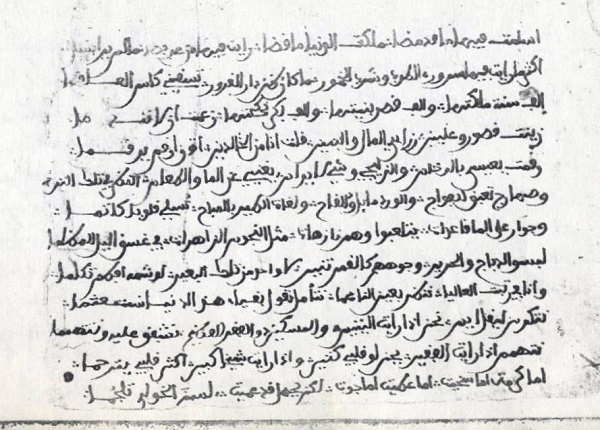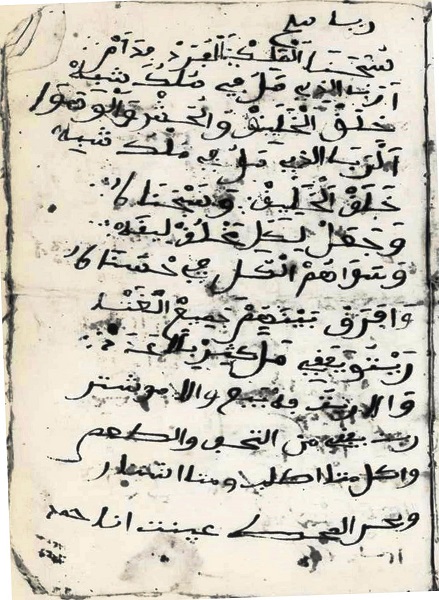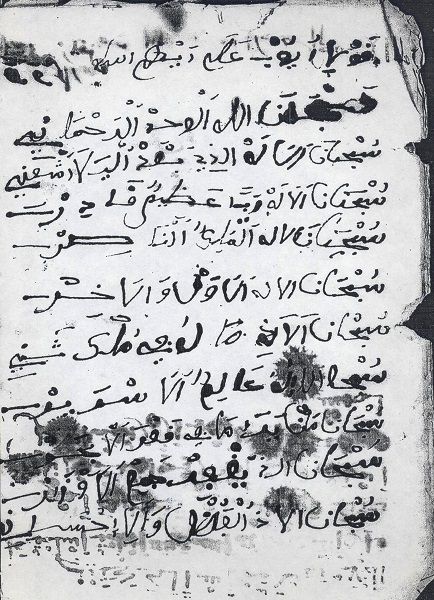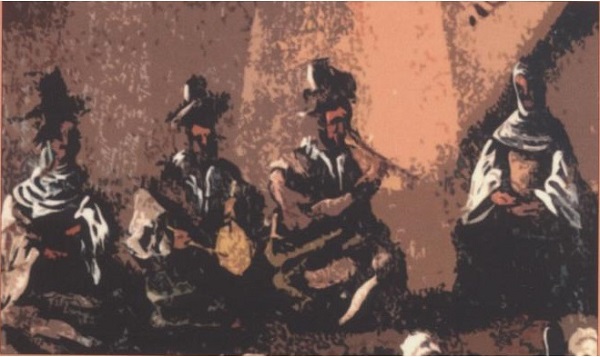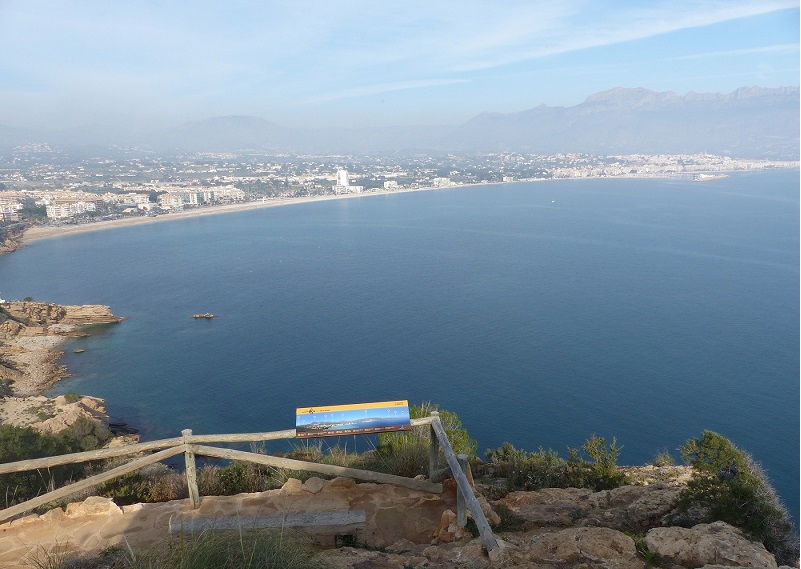Carmen Barceló and Ana Labarta, full university professors of the Arabic and Islamic studies area, have discovered, translated and published 168 poems in Arabic dialects written by Valencian Moriscos during the 16th century. The discovery, formed by pieces which were confiscated by the Inquisition, confirms that this minority created, versified and wrote about legends, love, religion and contemporary facts in their language and that Arabic was a cultural language at that time.
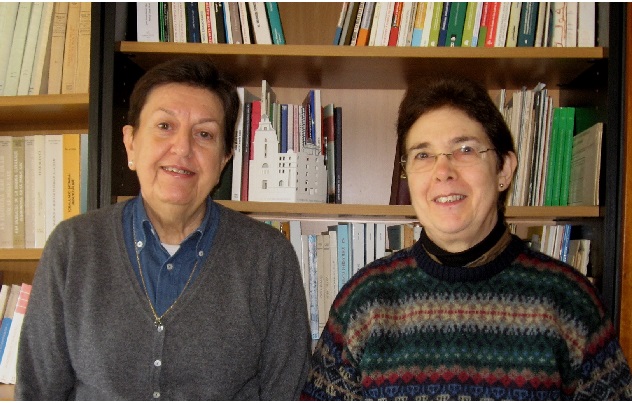
The importance of the work of the two researchers of the UV, who have been studying the language and culture of the Moriscos for more than 40 years, is to recognise the vitality of the Arabic dialects literature in the Iberian Peninsula until the early 17th century, with the survival of ancient poems and the elaboration of new ones. “Even though we knew that the Valencian Morisco community used the Arabic spoken language daily, these poems refute the idea that the subdued minority was humiliated, led a stupefied life and that it had lost its culture”, says Ana Labarta.
The Moriscos were the Muslims who were coerced into converting to Christianity and to be baptized under threat of expulsion in 1520. Only in some cases they ended up acquiring the culture of the conquerors and they were expelled in the early 17th century from Peninsula’s kingdoms by the decree of the king Felipe III in 1609.
The main body of the research carried out by Ana Labarta and Carmen Barceló consists of 56 poems copied in the same codex or register of 180 pages conserved in the Historical Library of the Universitat de València. In addition, the two researchers have found the documents kept in the National Historical Archive of Spain where the materials confiscated from the Valencian Moriscos by the Inquisition are contained, as well as in the General Archive of the University of Navarra and the Historical Archive of the province of Málaga.
‘With the expulsion, the Arabic dialect spoken by the Valencian Moriscos was lost. Therefore, we have been forced to deduce from the documents the sense and structure of the poems’, Ana Labarta underlines. Until now, the known documents of the Valencian Moriscos were letters, commercial and accounting entries or medical prescriptions, among others. The new work aims to claim the cultural legacy formed by the Valencian Moriscos of the 16th century.
The research of the two UV professors is particularly important in the case of Valencia since, among all the Peninsula territories the highest population percentage of Moriscos occurred in the Kingdom of Valencia. Due to the expulsion, among 120,000 and 130,000 people out of a population of 400,000 were boarded to North Africa. Moreover, thousands of Moriscos died in the conflicts which occurred previously to the expulsion (the battles of Espadán, of Cavall Verd and Muela de Cortés, among others) or on the way to the boarding ports. Some of them were murdered or their sons (called morisquets in Valencian) were kidnaped while their parents departed by exodus.
After the discovery of the texts, the two researchers encountered difficulties to transcribe them. In many cases the poems were written after dictation with words joined together. Ana Labarta and Carmen Barceló maintain these pieces were made to be sung in public. The poems have been found over the years in Arabic manuscripts of a poetic subject or in other Arabic manuscripts written in paper loose leaves preserved by chance among other documents. There are late pieces, most of which have never been published.
Flight from Callosa d’en Sarrià and book
The research developed by the two full university professors of the Universitat de València has been published in the book Cancionero Morisco, edited in 2016. It is a unique poetic corpus in the Arabic popular literature since there are not any similar example of this genre anywhere else.
Many of the poetries are religious, others are about love, there are some legends and adventures of characters of the early days of the Islam and about prophets from the Old and the New Testament as well, including the legend which narrates the meeting between Jesus and a skull who speaks to him. There are also some long poems which narrate in verse contemporary facts such as the Siege of Rhodes (1522) or the Algiers expedition (1541). In others, the behaviour of the Christian authorities, the Church and the Inquisition is criticised.
A fact narrated and signed by Valencian Moriscos is the flight of the population from the Callosa manor in 1580. The inhabitants of Callosa, Bolulla and Algar fled en masse helped by the governor of Algiers. He disembarked in Peñas del Albir (nowadays Serra Gelada) with 23 ships and went to Callosa with 1800 men and took with him all the Moriscos while the old Christians protected themselves in the castle.
The found poem, the number 13 of the book Cancionero morisco, remembers so in more than 150 verses: ‘After this. Attendees! Listen! /a beautiful piece which will be remembered from now on: /The history of Callosa, Bolulla and Algar/ Come to listen. Oh presents! /Oh attendees! It was Tuesday that day, / two hours before midday/The Muslims leave the sea /They went to Callosa/... The leader stood up and spoke/ He told them: Kind people!/ I came today/ to bring you to a land of Muslims/ I have come with the fleet/ to take you from the Christian land/ without excluding any man or woman/ I take you all.’
Carmen Barceló and Ana Labarta remind that it was ‘A fact which might be supported by a public who felt overwhelmed by the impertinences and the impositions of the Christian authority, the priests and the neighbours.’ This flight was preceded by other attempts. The two researchers remind that ‘among the flights of the Moriscos population, the first attempt should be mentioned. In 1579 more than 40 people from Callosa and Polop went to North Africa.’
Researchers
Carmen Barceló and Ana Labarta are full university professors of Arabic Studies in the Faculty of Language Studies, Translation and Communication of the Universitat de València. Ana Labarta has been professor in the universities of Barcelona, Zaragoza, Córdoba and in 1995 she joined the UV. Carmen Barceló has developed almost all her academic activity in the Universitat de València, where she was selected as the first dean of her faculty.
They are specialists in the Arabic dialect from Al-Andalus. For more than 40 years they have been studying the language, culture, onomastics, history and written and literary production of the Valencian Muslims from the beginnings of the 8th century to 1609 when they were expulsed, especially in the 15th and 16th centuries.
They have published several books and hundreds of articles individually or together. Among their studies based on the Arabic documentation it should be mentioned Minorías Islámicas en el País Valenciano (1984) by Carmen Barceló, La onomástica de los moriscos valencianos (1987) by Ana Labarta; Archivos moriscos (2009), published by both of them and València àrab en prosa i vers (2011).
Valencian Moriscos
In the case of Valencia, during the 16th century, most Moriscos lived in mountainous areas, far from the main centres of power. In the most significant cities they were also isolated in suburbs such as in Xàtiva, Valencia, Gandia, Dénia and Orihuela. When the expulsion took place, most Moriscos were gathered in the centre of what today would be the regions between the northern part of Ribera Alta and the southern part of Marina Baja. These territories were practically empty. Another significant centre of Moriscos are the surroundings of Sierra de Espadán.
Caption:
1.- (From left to right). Carmen Barceló and Ana Labarta, full university professors of Arabic Studies in the Faculty of Language Studies, Translation and Communication of the Universitat de València.
2, 3, and 4.- Poems 61, 105 and 118 from the book Cancionero Morisco.
5.- Valencian Moriscos represented in a detail of the painting of Vicent Mestre which shows the embark of the Moriscos in the port of Denia (Colección Bancaixa).
6.- Albir’s Beach (today it is located between Altea and l’Alfàs del Pi), seen from Serra Gelada where Moriscos from Callosa, Bolulla and Algar embarked to Algiers in 1580.
Images:
.jpg)

